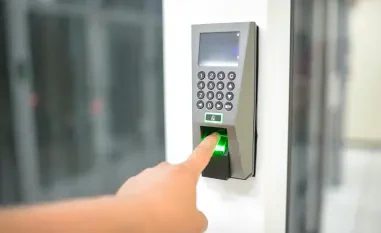Imagine a future where a quick tap of a smartphone could potentially replace the hassle of fumbling through a bag for a physical passport at airport security, a vision that took a significant step forward with Apple’s announcement of its Digital ID feature on November 12. This feature allows users to create identification credentials directly in Apple Wallet using data extracted from U.S. passports. Initially rolled out as a beta program at over 250 TSA checkpoints across U.S. airports, this innovation targets domestic travel identity verification. It aims to bridge a critical gap for individuals lacking REAL ID-compliant driver’s licenses or state IDs, offering a convenient alternative through passport-based digital credentials. While the technology sparks excitement about streamlined travel processes, questions remain about its scope, limitations, and whether it can truly stand in for traditional passports in all scenarios. This development marks a pivotal moment in the evolution of digital identity, prompting a closer look at its capabilities and constraints.
1. Understanding the Scope of Apple’s Digital ID Initiative
Apple’s latest Digital ID feature represents a bold move into the realm of digital identity verification, building on the foundation laid by its driver’s license and state ID program introduced in 2022. As of November, the Wallet ID functionality spans 12 U.S. states and Puerto Rico, with recent expansions to Montana, North Dakota, and West Virginia. Additionally, the feature has made its international debut in Japan through integration with the My Number Card on iPhone. This growing network of supported regions, including Arizona, California, Colorado, Georgia, Hawaii, Iowa, Maryland, Montana, New Mexico, North Dakota, Ohio, Puerto Rico, and West Virginia, underscores Apple’s commitment to broadening access to digital credentials. The introduction of Digital ID using U.S. passport data further extends this accessibility, targeting users who may not have state-issued REAL ID-compliant documents but possess a valid passport for identity verification.
However, the scope of Digital ID comes with clear boundaries that users must understand from the outset. Unlike physical passports, this digital credential is not designed for international travel or border crossings, limiting its utility to domestic scenarios within the U.S. The beta rollout at TSA checkpoints highlights its initial focus on airport security screenings for domestic flights. Travelers are advised to check for signage confirming acceptance at specific checkpoints before relying on this feature. While the potential for a seamless airport experience is evident, the restriction to domestic use raises questions about how comprehensively this technology can address broader travel needs. Future expansions to businesses and online platforms for age or identity verification are planned, though no specific timeline has been disclosed, leaving room for speculation on how soon Digital ID might evolve into a more universal tool.
2. Technical Requirements and Setup Process for Digital ID
Implementing Digital ID requires specific hardware and software to ensure compatibility and security during setup and use. The feature demands an iPhone 11 or later running iOS 16.1 or later, or an Apple Watch Series 6 or later with watchOS 16.1 or later. Additionally, a valid, unexpired U.S. passport is necessary to extract the required data. The setup process is methodical, beginning with tapping the Add button in Apple Wallet, selecting Driver’s License or ID Cards, and then choosing Digital ID. Users must scan the photo page of their physical passport using the iPhone camera, followed by reading the chip on the back cover to authenticate embedded data. A facial recognition step involves taking a selfie and following on-screen prompts for specific movements, such as smiling or turning the head, until the device vibrates to confirm capture. Optimal conditions, like a well-lit area with a plain background and no accessories like sunglasses or hats, are recommended for accuracy.
Using Digital ID at a checkpoint mirrors the familiar Apple Wallet experience, ensuring ease of access while maintaining security protocols. To present the credential, users double-click the side or Home button, position the device near an identity reader, review the requested information on the screen, and authenticate via Face ID or Touch ID. The system adheres to data minimization principles, sharing only the necessary details for a transaction after user approval. This structured approach not only simplifies identity verification but also prioritizes user control over personal information. However, the technical prerequisites and detailed setup process might pose challenges for less tech-savvy individuals or those without compatible devices. As the beta phase progresses across more than 250 U.S. airports, ensuring user education and infrastructure readiness will be crucial to widespread adoption of this innovative feature.
3. Privacy and Security Measures in Digital ID Architecture
A cornerstone of Apple’s Digital ID feature is its robust privacy and security framework, designed to protect user data in an era of increasing digital vulnerabilities. All Digital ID information is encrypted and stored locally on the device, rather than being transmitted to Apple’s servers. This ensures that the company has no visibility into when or where the credential is used, nor can it access the specific data shared during verification processes. Compliance with international standards, such as the W3C Digital Credentials API and ISO/IEC 18013-5 and 18013-7 protocols, further reinforces the system’s integrity through cryptographic signatures, device binding to prevent cloning, and session encryption to safeguard personal information. Biometric authentication via Face ID or Touch ID secures access, with accessibility options like Voice Control or passcodes available for those unable to use biometrics.
Beyond encryption and standards, the architecture of Digital ID addresses broader industry concerns about centralized data storage risks, as seen in past European age verification systems prone to breaches. By keeping credentials on individual devices, neither Apple nor issuing authorities can track presentation history or data patterns, enhancing user autonomy. The limitation of tying Digital ID to one device per Apple Account, with transfer options during new iPhone setup via Setup Assistant, adds another layer of control against unauthorized access. While these measures instill confidence in the technology’s safety, the beta status of the rollout suggests ongoing refinements may be needed to address real-world challenges. As Digital ID expands beyond TSA checkpoints, maintaining this privacy-first approach will be essential to gaining trust among users and stakeholders in diverse verification contexts.
4. Current Deployment and Future Expansion Plans
The beta deployment of Digital ID at over 250 TSA checkpoints across U.S. airports marks the initial testing ground for this technology, focusing on domestic travel security screenings. This phased rollout highlights the need for updated identity reader hardware and comprehensive TSA staff training to ensure smooth integration into existing systems. Travelers are encouraged to verify checkpoint signage for Digital ID acceptance before attempting to use the feature, as not all locations may be equipped during the early stages. This cautious approach allows for real-time feedback and adjustments, potentially paving the way for a more seamless user experience as the program matures. The focus on domestic travel underscores the current niche of Digital ID, distinguishing it from broader passport functions that remain tied to physical documents.
Looking ahead, Apple has outlined plans to expand Digital ID beyond airports to select businesses and online platforms for purposes like age or identity verification, though a concrete timeline remains undisclosed. This potential growth could transform how individuals prove their identity in various settings, from purchasing restricted items to accessing secure digital services. However, the success of such expansion hinges on widespread adoption of compatible infrastructure and user familiarity with the technology. As the beta phase provides critical insights, collaboration with industry partners and regulatory bodies will likely shape the pace and scope of future implementations. The gradual nature of this rollout reflects a strategic effort to balance innovation with reliability, ensuring Digital ID can meet diverse needs without compromising security or convenience in the long term.
5. Limitations and Complementary Role of Digital ID
Despite its innovative approach, Digital ID carries significant limitations that prevent it from fully replacing traditional identification methods. It cannot substitute for physical passports in scenarios involving international travel, border crossings, or interactions with law enforcement requiring conventional documents. Users must continue to carry valid, unexpired U.S. passports for such purposes, underscoring that Digital ID serves as a supplementary tool rather than a standalone solution. This restriction confines its utility to specific domestic contexts, particularly within the beta framework of TSA checkpoints for airport security. As a result, expectations for a complete shift away from physical IDs must be tempered by the reality of its current scope and regulatory constraints.
In addition to its limited application, Digital ID functions alongside state-issued mobile credentials in Apple Wallet, offering users flexibility to maintain multiple forms of identification. Individuals can select the most appropriate credential based on specific verification requirements, enhancing convenience in situations where Digital ID is accepted. This complementary role positions the feature as an added layer of accessibility for those without REAL ID-compliant driver’s licenses or state IDs, rather than a direct competitor to existing systems. However, the beta designation suggests that ongoing testing and refinement are necessary to address potential gaps in functionality or acceptance. As the technology evolves, understanding its place within the broader identification ecosystem will help users navigate its benefits while adhering to situations where physical documents remain indispensable.
6. Reflecting on Milestones and Future Horizons
Looking back, Apple’s journey in digital identity began with the introduction of driver’s license and state ID support in Wallet in 2022, setting a precedent for secure, device-based credentials. This was followed by WebKit’s announcement of Digital Credentials API support in Safari 16 on October 3, further aligning with global standards for digital verification. The launch of Digital ID using U.S. passport data on November 12 marked a significant expansion of this vision, targeting domestic travel verification at over 250 U.S. airport TSA checkpoints. Additionally, the scheduled mandatory implementation of the EU Digital Identity Wallet in 2026 signaled a broader global shift toward digital credentials, positioning Apple’s efforts within an international context of innovation and regulation. These milestones highlighted a steady progression toward integrating digital identity into everyday life.
As the dust settles on these developments, the path forward points to actionable steps for enhancing Digital ID’s impact. Stakeholders need to prioritize infrastructure upgrades and user education to ensure smooth adoption across diverse environments. Collaboration between technology providers, regulatory bodies, and industry partners could accelerate the expansion to businesses and online platforms, addressing gaps in current capabilities. Moreover, continuous refinement based on beta feedback is essential to tackle unforeseen challenges in real-world applications. While Digital ID has carved a niche in domestic travel verification, its evolution into a more versatile tool demands a focus on scalability and interoperability with global systems. These considerations offer a roadmap for transforming digital identity from a novel feature into a cornerstone of modern convenience and security.













